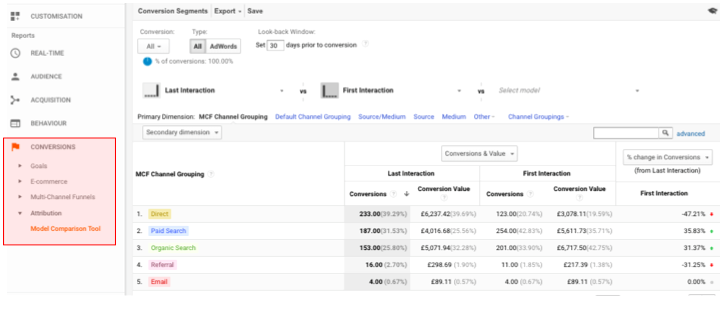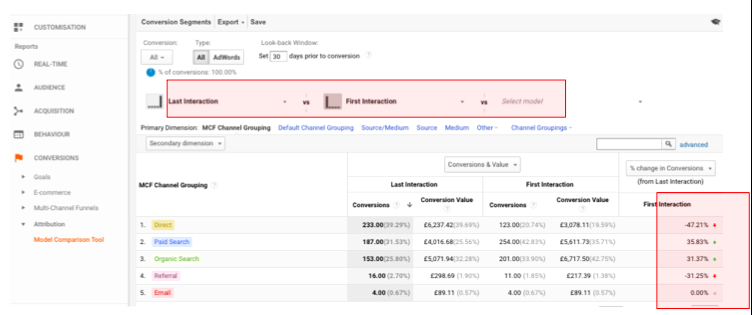Website visitors – is your business getting the full picture?
In this article we’ll explain why your Google Analytics data might be misleading – and what you can do to get a clearer picture.
Google Analytics is a great tool for providing information about the key user actions on a website, such as an online sale, or use of an enquiry form. Analytics can also show which pages on the website lead to the most goal completions, or which channels provide the biggest impact.
Many businesses make marketing decisions based on this data – for instance if you’re a web shop and Paid Search isn’t bringing you shoppers, you decide to spend your budget elsewhere.
But is the business making the wrong decisions, based on the wrong data?
Google, by default, uses “Last Interaction Attribution” – it assigns all conversion data to the source of the click during the website session when the conversion happened. But we all know from our own use of the web that a conversion is rarely in the form:
found website on search engine -> came to website -> bought
The reality is usually messier – you find what you want on Google Shopping, but you don’t know if it’s the best price. You search again and check prices – then you get distracted, close your browser and start the search again later. Maybe you remember the name of the site that had the best price, type in the URL and buy what you wanted.
This example would have resulted in the conversion being classified as Direct (because the user typed in the URL). But in reality, the buyer first found the product via Paid Search (a Google AdWords advert in Google Shopping).
Exploring Attribution Models in Google Analytics can help give a better idea of the real picture:

As well as the default Last Interaction, Google has other attribution models, such as:
- Time Decay = more credit to recent interactions
- Linear = equal credit to all interactions
- Position Based = more credit to first and last interactions
We usually see Last Interaction attribution giving too much credit to Direct (usually someone typing in the web address to the browser, or using a browser bookmark); and not enough given to where the user first found the website, usually Search.
In the example below, you’ll see that when this online retailer looks at the First Interaction attribution model, it gets 35% more revenue from Paid Search than the Last Interaction model suggests.

What is the right attribution model to use? Every business is different, and typical user behaviour does too. Look at the attribution models that Google offers and work out which one best fits the business – it won’t be a perfect fit, but it could shed a different light on marketing decisions.

